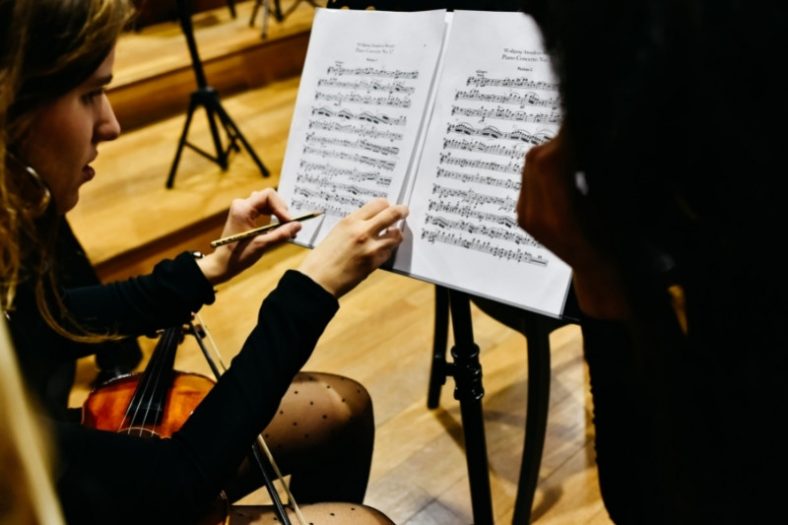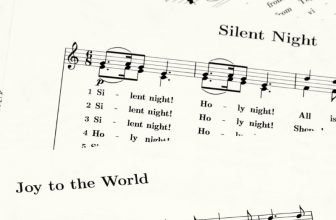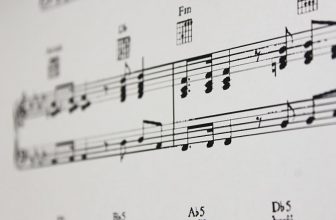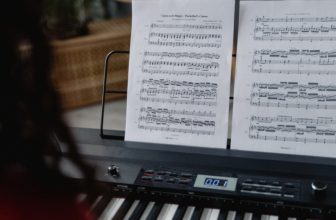What is Binary Form in Music?

The binary form is one of the most used musical forms in musical compositions. The word binary can be defined as anything involving two things or divided into two. The word itself already gives an idea about what this musical form can be.
Does the binary form have two movements? Or, is it divided into two in some ways? What can it be?
In this article, I’d like to provide you with an overview of binary form. First, I’ll start with basic terms to find an answer to the question “what is binary form?”.
Contents
What is Binary Form?
A binary form is a musical structure with two sections. The name indicates its dual characteristic that exists in one piece. It is the structural pattern of many songs and instrumental pieces, from the 17th to the 19th century. It has two complementary, related sections of equal length. This pattern can be shown in music as A B.
In the musical labeling procedure, alphabetic letters indicate the musical sections, including passages, pieces, and cycles:
A = the initial idea
B, C, D… = the alternate opposing elements
A¹, B² = the return of the first or another musical unit in variations
a, b, c,…= the subdivisions of each substantial unit
A’, A” = similar divisions with slight changes
Each section is typically repeated in this A B form, either with repeat signs or by writing them out. Most of the time, you’ll see repeat signs, but now and then, you’ll see it written out in a score.
Ex. A :||: B :||
Reasons for writing out the repeat signals include the composer’s desire to change the orchestration. They can also write down special embellishments for the second run through those sorts of things.
Standalone dance activities where large groups of movements are significantly separated from the rest may embody independent binary forms. Some examples include sarabande, courante, minuet, gigue, allemande, gavotte, bourrée.
Themes of variation movement and rondo movement refrains are also rendered in binary form. If you look at the types of variation sets, the one that most often has the theme in binary form is the one that was popular in the classical era. As a result, a very sectional design begins with a very simple motif that is expanded by a variety of different sorts of ornamentation.
Musical Form
Musical form is the basic structural plan. It’s used to ease composing a melody, rhythm, harmony, and phrasal in a specific sectional pattern without getting lost in various ideas. There are four essential types of musical form:
The Iterative Type: a primary melodic line in repetition,
The Reverting Type: the repetition of the primary melodic line comes after a contrasting phrase. (Binary is one of the reverting type forms),
The Strophic Type: a single section repeatedly turning into different variations.
The Progressive Type: new melodic material introduction constantly.
As a reverting type, the binary form has also various types.
Classification of Binary Form
You characterize binary form types by their melodic and harmonic architecture. If you study musical form, you should know that these are the two things to consider in the context of a variety of different forms.
Besides, for the classification, you need to consider three aspects, which may be summarized in the three questions you’ll be looking at below:
1. Is there an authentic cadence (V to I/dominant to tonic) in the tonic key at the end of Section A?
A :||: B :||
cadence
Suppose you’re writing in a binary form with two parts that are both repeated right away. You’ll look at the cadence that happens right before the first repeat sign if you’re using one that has a repeat sign in it. If this stated cadence is an authentic cadence in the tonic key, then this is called sectional form.
Musicians use the term sectional to indicate a tonally closed section. The section begins and finishes in the same key. The end of that section tonally closes up with an authentic cadence in that specific key.
The opposite to sectional forms are continuous forms. And “continuous” in this case means “if anything else happens there.”
2. Is there a digression (modulation, sequencing, and/or dominating prolongation) followed by a reprise in the second section?
If binary forms have a reprise they are called rounded binary forms.
Simple binary forms are those that do not have a reprise: The halves may have different material or they may be parallel melodically.
3. Is the first section’s end repeated at the end of the second section? (You can imagine this situation as an end rhyme between the two sections with the poetry terminology)
If the ends of both sections are similar, you call it – balanced.
If they are not similar, you simply call it – not balanced.
Examples of Binary Forms
1. Simple Binary Form
The simple binary form that includes two sections called A and B became popular in the Baroque period between 1600 to1750.
Ex. A :||: B :||
When the A section is in a Major key, the B section comes in the Dominant key. If A section is in C Major, for example, B section will be moved to G Major as it is the dominant key of C Major.
Ex. A in C Major :||: B in G Major :||
Section A may be in a minor key as well. In this case, Section A moves into Section B in relative Major key. If Section A is in A minor, we move into Section B in C Major as it is the relative Major key of the A minor.
Ex. A in A minor :||: B in C Major :||
A subtype of the simple binary form called parallel binary has similar thematic content in the first and the second sections. Still, the second section has a very different harmonic structure, and it might rework many of the motives that were first introduced in the first A section.
Ex. A :||: A’ :||
Hence, the second Section A’ shows us that there’s been some alteration compared to Section A.
2. Rounded Binary Form
This type of binary form became famous later on in the next period Classical Period between 1750 to 1820. The rounded binary form gained prominence in the late 18th century when composers developed and refined it into the sonata form. The sonata form has the same structure as the sonata-allegro or first movement form. The only difference is their names.
There are still two sections called Section A and Section B in the rounded binary form. But, this time, there is a double return of the opening theme at the opening pitch level. Section A, which starts in tonic at the beginning of the binary form, will return in the second section.
The opening theme will come back, and it will come back in the same key. That return of the tonic key at the exact moment of the melodic reprise is significant to compose a rounded binary form.
Ex. A :||: B A :||
You can see how the rounded binary form is a development of the simple one, and it’s close to the ternary form because it’s almost A B A but still not exactly.
Summary
The binary form is a popular choice for composers. It is simple to create contrasting sections and it provides a sense of closure.
If you are going to compose in a binary form, you need a clear A B structure. Additionally, some contrast between your A and B sections. Ideally, you can put that contrast with the key change either to the dominant or the relative minor.
As composers continue to explore the possibilities of the binary form, it is sure to remain one of the most popular and well-loved forms in music.





